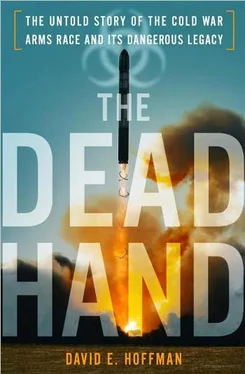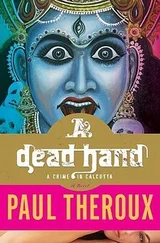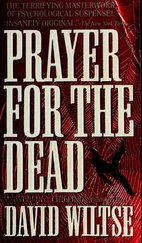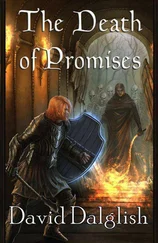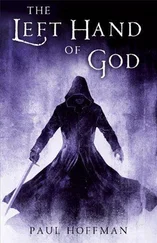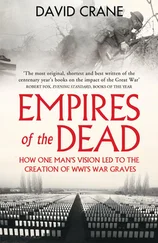After World War II, large underground installations were built outside of the capital. One was Mount Weather in Virginia’s Blue Ridge Mountains, seventy miles from Washington, and another was at Raven Rock Mountain, six miles north of Camp David on the Pennsylvania-Maryland border. Both could serve as military command posts in the event of war. But the Reagan planners realized that a president might not make it to these bunkers in time. They devised a plan to dispatch three teams from Washington to separate, secure locations around the United States. Each team had to be prepared to proclaim a new American “president” and assume command of the country, according to author James Mann. If the Soviet Union was able to hit one team with a nuclear weapon, the next one would be ready. “This was not some abstract textbook plan, but was practiced in concrete, thorough and elaborate detail,” Mann said. Each time a team left Washington, usually for several days of exercises, it brought one member of Reagan’s cabinet who would serve as the successor “president.” The entire program—intended to be carried out swiftly, under extreme stress and amid the potential chaos of impending nuclear war—was extra-legal and extra-constitutional. It established a process of presidential succession, Mann pointed out, that is nowhere in the Constitution or federal law. A secret agency, the National Program Office, spent hundreds of millions of dollars a year to keep the continuity-of-government program ready. 43
On November 11, 1982, Reagan was awakened at 3:30 A.M. with word of Brezhnev’s death in Moscow. Two days later, he visited the Soviet Embassy to pay his respects, and wrote in the book of condolences, “I express my condolences to the family of President Brezhnev and the people of the Soviet Union. May both our peoples live jointly in peace on this planet. Ronald Reagan.” In Moscow, Yuri Andropov was elevated to be Brezhnev’s successor. His first comments reflected the dark mood of the Soviet leadership. “We know very well,” Andropov said, “that peace cannot be obtained from the imperialists by begging for it. It can be upheld only by relying on the invincible might of the Soviet armed forces.” 44
When Reagan had warned of a “window of vulnerability” in 1980, the most worrisome threat came from Soviet land-based missiles, especially the new generation, the SS-17, SS-18 and SS-19. By 1982, the Soviet missile force had grown to fourteen hundred launchers carrying over five thousand warheads. The U.S. missile force had 1,047 launchers and about 2,150 warheads. 45The fear was that in a first strike, just a portion of the Soviet force could wipe out nearly all the American missiles still sitting in their silos. Reagan struggled—as had Presidents Ford and Carter—to respond to the Soviet buildup with the development of a new-generation American super weapon, the MX, or Missile Experimental. The 100-ton MX would be three times more accurate than the Minuteman III, and carry ten warheads, each independently targetable. Under the original plan to deploy two hundred MX missiles, the Soviets would face the prospect of two thousand warheads raining down on their silos. That would begin to ease concerns about the window of vulnerability.
But the MX ran into political opposition, especially over complex schemes to base the missile so it would not be vulnerable to a Soviet first strike. Reagan scrapped Carter’s idea of a vast racetrack. Reagan’s administration tried three different ideas, and in 1982 came up with “Dense Pack,” to base 100 MX missiles in super-hardened silos in a strip fourteen miles long and 1.5 miles wide in southwestern Wyoming. The thinking behind Dense Pack was that incoming Soviet missiles would commit “fratricide,” exploding so close to each other as to neutralize the impact and leaving much of the MX force intact. In an effort to build political support, Reagan delivered a nationally televised appeal for the MX missile on November 22, 1982, renaming it “Peacekeeper.” He acknowledged that people had become more fearful that the arms race was out of control. “Americans have become frightened and, let me say, fear of the unknown is entirely understandable,” he said. Despite his appeal, on December 7, the House voted to reject funding for the MX, and the next day the chairman of the Joint Chiefs of Staff, Army General John W. Vessey Jr., revealed in Senate testimony that three of the five joint chiefs opposed the Dense Pack basing plan. The MX was in deep trouble, and the political deadlock worried U.S. military leaders. 46The MX was their answer to preserving the land-based leg of the strategic triad, the land-sea-air combination at the backbone of deterrence. That summer, Admiral James D. Watkins, chief of naval operations, had concluded the United States was heading into a dangerous dead end, what he called a “strategic valley of death.” 47Robert Sims, a retired navy captain who was then a spokesman for the National Security Council, said the joint chiefs had concluded “this is probably the last missile this Congress is ever going to go for. They were frustrated. They weren’t certain they would get the MX and they knew they couldn’t get anything after MX. So they said, ‘We’ve got to look beyond MX.’” 48
It was in this environment of political deadlock that Reagan began to look over the horizon. What happened next was a blend of old imaginings and fresh pragmatism, animated by Reagan’s faith in American high technology and a touch of science fiction. In the final months of 1982 and then early 1983, Reagan embraced a grand dream: to build a massive globe-straddling shield that would protect populations against ballistic missiles and make nuclear weapons “impotent and obsolete.” The missile defense was never constructed. It was nothing more than a ghost invention. But the concept preoccupied and puzzled the Soviet Union for years to come. To understand Reagan, it is important to understand the origins of the dream.
As a boy, Reagan read fiction voraciously, including the science fiction of Edgar Rice Burroughs, among them Princess of Mars , a story with visions of polished domes over cities and impregnable walls. By the time he reached young adulthood, Reagan abhorred warfare. At twenty years old, he wrote a wrenching sketch of combat while at Eureka College in 1931. The piece was titled “Killed in Action” and described a World War I trench battle scene. 49Reagan was appalled at the power of the nuclear bombs on Hiroshima and Nagasaki. Appearing before a leftist audience in 1945, he gave a dramatic reading of a poem, “Set Your Clock at U235,” by Norman Corwin, which referred ominously to “skies aboil with interlocking fury.” 50
To these ideas, Reagan added a philosophy of anti-communism, which he polished on the speaking circuit in the 1950s and 1960s. In one notable address, he outlined a strategy of pushing the Soviet economic system to collapse. It was the early 1960s, when Khrushchev and Kennedy were in power. Reagan fumed that Kennedy and the “liberal establishment of both parties” have been pursuing “a policy of accommodation with the Soviet Union.”
“The theory goes something like this,” Reagan said. “As time goes on the men in the Kremlin will come to realize that dogmatic communism is wrong. The Russian people will want a chicken in every pot, and decide some features of decadent capitalism make for more plentiful poultry, while their system hasn’t even provided a pot. By a strange paradox us decadent capitalists will have discovered in the meantime that we can do without a few freedoms in order to enjoy government by an intellectual elite which obviously knows what is best for us. Then on some future happy day Ivan looks at Joe Yank, Joe looks at Ivan, we make bridge lamps out of all those old rockets, and discover the cold war just up and went away…”
Читать дальше
